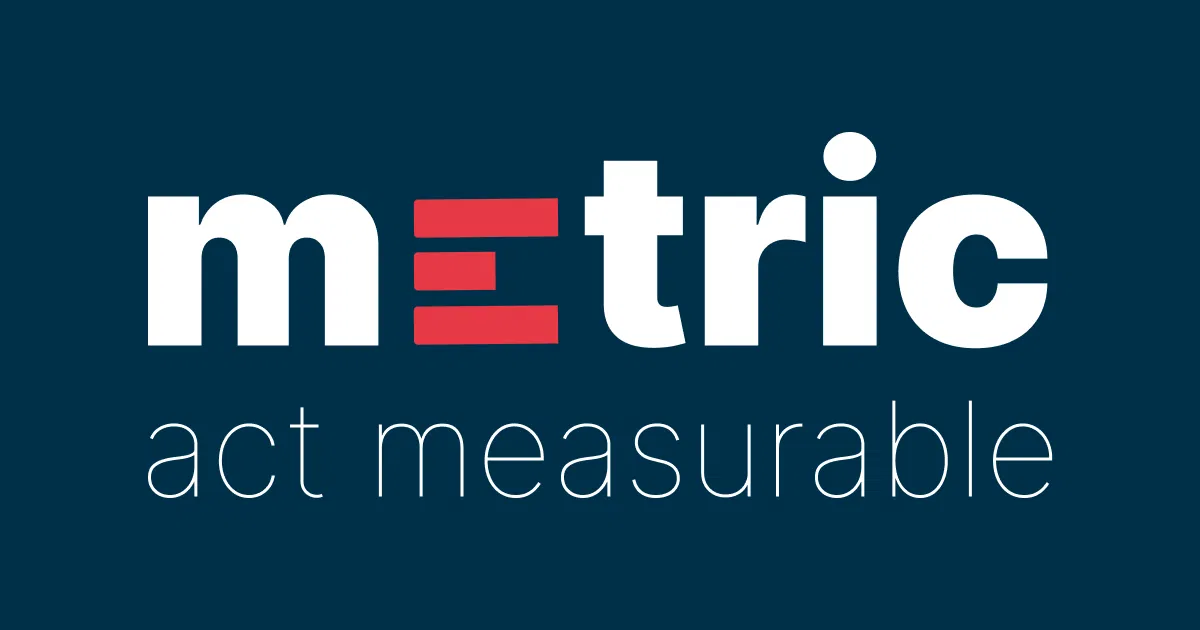03 Linear Independence, Basis, SLE, Eigen-staff
 լուսանկարի հղումը, Գազանանոց, Հեղինակ՝ Elmira Gokoryan
լուսանկարի հղումը, Գազանանոց, Հեղինակ՝ Elmira Gokoryan
📚 Նյութը ToDo
🏡 Տնային
- ❗❗❗ DON’T CHECK THE SOLUTIONS BEFORE TRYING TO DO THE HOMEWORK BY YOURSELF❗❗❗
- Please don’t hesitate to ask questions, never forget about the 🍊karalyok🍊 principle!
- The harder the problem is, the more 🧀cheeses🧀 it has.
- Problems with 🎁 are just extra bonuses. It would be good to try to solve them, but also it’s not the highest priority task.
- If the problem involve many boring calculations, feel free to skip them - important part is understanding the concepts.
- Submit your solutions here (even if it’s unfinished)
Systems of Linear Equations
01: GPS positioning - from 2D to 3D
Part A: 2D Positioning (Easier warm-up)
Imagine you’re lost in a 2D world and receive distance signals from cell towers: - Tower A at (0, 0): You are 5 units away - Tower B at (6, 0): You are 3 units away
- Write the system of equations for your position (x, y).
- Solve it step by step using substitution or elimination.
- Plot the circles and find their intersection point(s).
Part B: 3D GPS Challenge
Now for real GPS with 4 satellites in 3D space: - Why do you need exactly 4 satellites for 3D positioning when you only need 2 towers for 2D? - What happens if you only have 3 satellites?
02: Linear regression with normal equations
You have the following data points for house size (x) vs price (y): - (50, 100), (100, 180), (150, 280)
- Set up the design matrix X (including the intercept column) and target vector y.
- Solve the normal equation \(\vec{\theta} = (X^T X)^{-1} X^T \vec{y}\) (set up the system of linear equations and you can use Gaussian elimination).
- Find the line equation \(y = \theta_0 + \theta_1 x\).
- Plot the data points and your fitted line.
- Predict the price for a 120 square meter house.
Hint for 1.: We want to express calculating y (the price) as a matrix multiplication of X and theta.
\[\vec{y} = X \vec{\theta}\]
Where \(\vec{\theta} = \begin{pmatrix} \theta_0 \\ \theta_1 \end{pmatrix}\). In order for each \(y_i = \theta_0 + \theta_1 x_i\), we set up the design matrix (X) as follows: \[X = \begin{pmatrix} 1 & 50 \\ 1 & 100 \\ 1 & 150 \end{pmatrix}\]
Calculate the product \(X \vec{\theta}\) to verify that each \(y_i\) corresponds to plugging in \(x_i\) into the line equation.
Step 1: Set up the design matrix X and target vector y
For the data points (50, 100), (100, 180), (150, 280), we need to include an intercept column:
\[X = \begin{pmatrix} 1 & 50 \\ 1 & 100 \\ 1 & 150 \end{pmatrix}, \quad \vec{y} = \begin{pmatrix} 100 \\ 180 \\ 280 \end{pmatrix}\]
Step 2: Solve the normal equation
First, compute \(X^T X\): \[X^T = \begin{pmatrix} 1 & 1 & 1 \\ 50 & 100 & 150 \end{pmatrix}\]
\[X^T X = \begin{pmatrix} 1 & 1 & 1 \\ 50 & 100 & 150 \end{pmatrix} \begin{pmatrix} 1 & 50 \\ 1 & 100 \\ 1 & 150 \end{pmatrix} = \begin{pmatrix} 3 & 300 \\ 300 & 35000 \end{pmatrix}\]
Next, compute \(X^T \vec{y}\): \[X^T \vec{y} = \begin{pmatrix} 1 & 1 & 1 \\ 50 & 100 & 150 \end{pmatrix} \begin{pmatrix} 100 \\ 180 \\ 280 \end{pmatrix} = \begin{pmatrix} 560 \\ 59000 \end{pmatrix}\]
Now solve \((X^T X) \vec{\theta} = X^T \vec{y}\): \[\begin{pmatrix} 3 & 300 \\ 300 & 35000 \end{pmatrix} \begin{pmatrix} \theta_0 \\ \theta_1 \end{pmatrix} = \begin{pmatrix} 560 \\ 59000 \end{pmatrix}\]
Using Gaussian elimination: - From the first equation: \(3\theta_0 + 300\theta_1 = 560\) - From the second equation: \(300\theta_0 + 35000\theta_1 = 59000\)
Multiply the first equation by 100: \(300\theta_0 + 30000\theta_1 = 56000\)
Subtract from the second equation: \(5000\theta_1 = 3000\), so \(\theta_1 = 0.6\)
Substitute back: \(3\theta_0 + 300(0.6) = 560\), so \(3\theta_0 = 380\), giving \(\theta_0 = 126.67\)
Step 3: Line equation \[y = 126.67 + 0.6x\]
Step 4: Verification Check our solution with the data points: - For x = 50: \(y = 126.67 + 0.6(50) = 156.67\) (close to 100) - For x = 100: \(y = 126.67 + 0.6(100) = 186.67\) (close to 180) - For x = 150: \(y = 126.67 + 0.6(150) = 216.67\) (close to 280)
Step 5: Prediction for 120 square meters \[y = 126.67 + 0.6(120) = 198.67\]
The predicted price for a 120 square meter house is approximately 198.67 (thousand units).
03: The cheese shop multicollinearity problem
A cheese shop tracks the following features for each cheese: - Price in AMD: \(p_1\) - Price in USD: \(p_2\) - Weight in kilograms: \(w_1\) - Weight in pounds: \(w_2\)
Given the conversion rates: 1 USD = 400 AMD and 1 kg = 2.2 pounds.
Linear dependence detection: Which features are linearly dependent? Write the exact relationships.
Matrix rank problem: If you create a data matrix with these 4 features for 100 cheeses, what would be the maximum possible rank? Why?
Feature selection: Which 2 features should you keep to avoid multicollinearity? Explain your choice.
System solvability: If you try to fit a model using all 4 features, what problems might arise? Hint: Think about the normal equation and matrix invertibility.
04: System consistency analysis
For which values of \(a\) does the following system have 0, 1, or infinitely many solutions?
\[\begin{cases} x + 2y + z = 1 \\ 2x + 4y + az = 2 \\ -x - y + (a-1)z = 0 \end{cases}\]
05: Linear independence in polynomial space
Determine if the set \(\{1 + t, 1 + 2t, 1 + t + t^2\} \subset P_2\) is linearly independent. If dependent, express one polynomial as a linear combination of the others.
06: Matrix subspaces and trace
Let \(V = \{M \in M_{2 \times 2} : \text{tr}(M) = 0\}\) be the set of \(2 \times 2\) matrices with zero trace.
- Prove that \(V\) is a subspace of \(M_{2 \times 2}\).
- Find a basis and determine the dimension of \(V\).
07: Change of basis and coordinates
Let \(B = \{(3,1), (2,1)\}\) and \(C = \{(1,1), (1,0)\}\) be bases of \(\mathbb{R}^2\).
- Find the change-of-basis matrix \(P_{C \leftarrow B}\).
- If \([v]_B = (1, 2)^T\), compute \([v]_C\).
Hint: \([v]_B\) notation means that the coordinates of vector \(v\) in basis \(B\) are \((1, 2)^T\) e.g. \(v = 1 \cdot (3,1) + 2 \cdot (2,1)\).
Part 1: Find the change-of-basis matrix \(P_{C \leftarrow B}\)
The columns of the change-of-basis matrix \(P_{C \leftarrow B}\) are the coordinate vectors of the basis vectors in \(B\) relative to the basis \(C\). Let \(\vec{b_1} = (3,1)\), \(\vec{b_2} = (2,1)\), and \(\vec{c_1} = (1,1)\), \(\vec{c_2} = (1,0)\).
We need to express \(\vec{b_1}\) and \(\vec{b_2}\) as linear combinations of \(\vec{c_1}\) and \(\vec{c_2}\).
For \(\vec{b_1} = (3,1)\): We need to find scalars \(x_1, y_1\) such that \((3,1) = x_1(1,1) + y_1(1,0)\). This gives the system: \[ \begin{cases} x_1 + y_1 = 3 \\ x_1 = 1 \end{cases} \] Solving this system yields \(x_1 = 1\) and \(y_1 = 2\). So, \([\vec{b_1}]_C = \begin{pmatrix} 1 \\ 2 \end{pmatrix}\).
For \(\vec{b_2} = (2,1)\): We need to find scalars \(x_2, y_2\) such that \((2,1) = x_2(1,1) + y_2(1,0)\). This gives the system: \[ \begin{cases} x_2 + y_2 = 2 \\ x_2 = 1 \end{cases} \] Solving this system yields \(x_2 = 1\) and \(y_2 = 1\). So, \([\vec{b_2}]_C = \begin{pmatrix} 1 \\ 1 \end{pmatrix}\).
Combining these column vectors gives the change-of-basis matrix: \[ P_{C \leftarrow B} = \begin{pmatrix} 1 & 1 \\ 2 & 1 \end{pmatrix} \]
Part 2: Compute \([v]_C\)
To find the coordinates of \(v\) with respect to basis \(C\), we use the formula: \[ [v]_C = P_{C \leftarrow B} [v]_B \]
Given \([v]_B = \begin{pmatrix} 1 \\ 2 \end{pmatrix}\), we can compute: \[ [v]_C = \begin{pmatrix} 1 & 1 \\ 2 & 1 \end{pmatrix} \begin{pmatrix} 1 \\ 2 \end{pmatrix} = \begin{pmatrix} 1 \cdot 1 + 1 \cdot 2 \\ 2 \cdot 1 + 1 \cdot 2 \end{pmatrix} = \begin{pmatrix} 1 + 2 \\ 2 + 2 \end{pmatrix} = \begin{pmatrix} 3 \\ 4 \end{pmatrix} \]
So, the coordinates of the vector \(v\) in the basis \(C\) are \((3, 4)^T\).
08: Basis verification in different vector spaces
In each case, determine whether \(S\) is a basis for \(V\):
a) \(V = P_3\), \(S = \{0, x, x^2, x^3\}\)
b) \(V = M_{2 \times 2}\), \(S = \left\{I_2, \begin{pmatrix} 1 & 3 \\ 2 & 4 \end{pmatrix}, \begin{pmatrix} 1 & 2 \\ 3 & 4 \end{pmatrix}\right\}\)
c) \(V = \mathbb{R}^3\), \(S = \{e_1, e_2, e_1 + 3e_2\}\)
d) \(V = P_1\), \(S = \{1 - 2x, 2 - x\}\)
09: Linear transformation from coordinates
Suppose \(T\) is a linear transformation from \(\mathbb{R}^2\) to \(P_2\) such that: \[T\begin{pmatrix} -1 \\ 1 \end{pmatrix} = x + 3, \quad T\begin{pmatrix} 2 \\ 3 \end{pmatrix} = 2x^2 - x\]
Find \(T\begin{pmatrix} a \\ b \end{pmatrix}\) for arbitrary \(a, b \in \mathbb{R}\).
10: Geometric eigenvalue intuition
Without doing any calculations, determine the eigenvalues and eigenvectors for the following transformations by thinking about their geometric effects:
a) Shear matrix: \(S = \begin{pmatrix} 1 & 1 \\ 0 & 1 \end{pmatrix}\)
- What vectors remain on the same line after this transformation?
- What vectors get stretched or shrunk (and by what factor)?
b) Rotation matrix: \(R = \begin{pmatrix} 0 & -1 \\ 1 & 0 \end{pmatrix}\) (90° counterclockwise)
c) Reflection matrix: \(F = \begin{pmatrix} 1 & 0 \\ 0 & -1 \end{pmatrix}\) (reflection across x-axis)
d) Scaling matrix: \(D = \begin{pmatrix} 3 & 0 \\ 0 & 2 \end{pmatrix}\)
11: Matrix powers using eigenvalues
Consider the matrix \(A = \begin{pmatrix} 5 & 8 \\ 2 & 5 \end{pmatrix}\). We want to compute \(A^{10}\) efficiently.
Find eigenvalues and eigenvectors of matrix \(A\).
Diagonalize the matrix: Express \(A = PDP^{-1}\) where \(D\) is diagonal.
Compute high powers efficiently: Use diagonalization to find \(A^{10}\) without multiplying the matrix 10 times.
Pattern recognition: What happens to \(A^n\) as \(n \to \infty\)? Which eigenvalue dominates?
15: From ellipse equation to eigenanalysis
էս մեկը ընթացիկ ա ուղղակի, ավելի շուտ օպտիմ անելուց ենք նայելու, բայց դե ստեղից չեմ ջնջում որովհետև գուցե ինչ-որ մեկը ուզի հիմիկվանից էլ բզբզա
You are given the equation of an ellipsoid
\[3x^2 + 2y^2 + 2xy\]
Part A: Extract the matrix representation
Rewrite as quadratic form: Express the equation in the form \(\mathbf{v}^T A \mathbf{v}\) where \(\mathbf{v} = \begin{pmatrix} x \\ y \end{pmatrix}\).
Build the symmetric matrix: What is the matrix \(A\)?
Part B: Eigenanalysis
Find eigenvalues and eigenvectors: Compute the eigenvalues \(\lambda_1, \lambda_2\) and their corresponding eigenvectors \(\mathbf{v}_1, \mathbf{v}_2\).
Verify orthogonality: Check that the eigenvectors are orthogonal to each other.
Part C: Geometric interpretation
- Principal axes: The eigenvectors represent the principal axes of the ellipse. What are the directions of these axes in the plane?
- Sketch and describe:
- Which axis is the major axis (longer)? Which is the minor axis (shorter)?
- How is the ellipse oriented relative to the standard x-y coordinate axes?
- What’s the angle of rotation from the standard axes?
